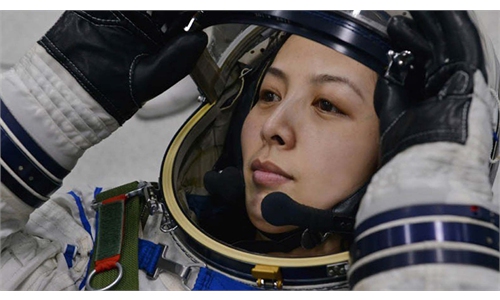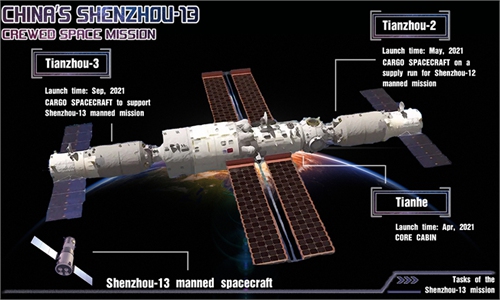Rocket fueled for Shenzhou-13 mission, set to be launched Saturday with first female taikonaut to China's space station
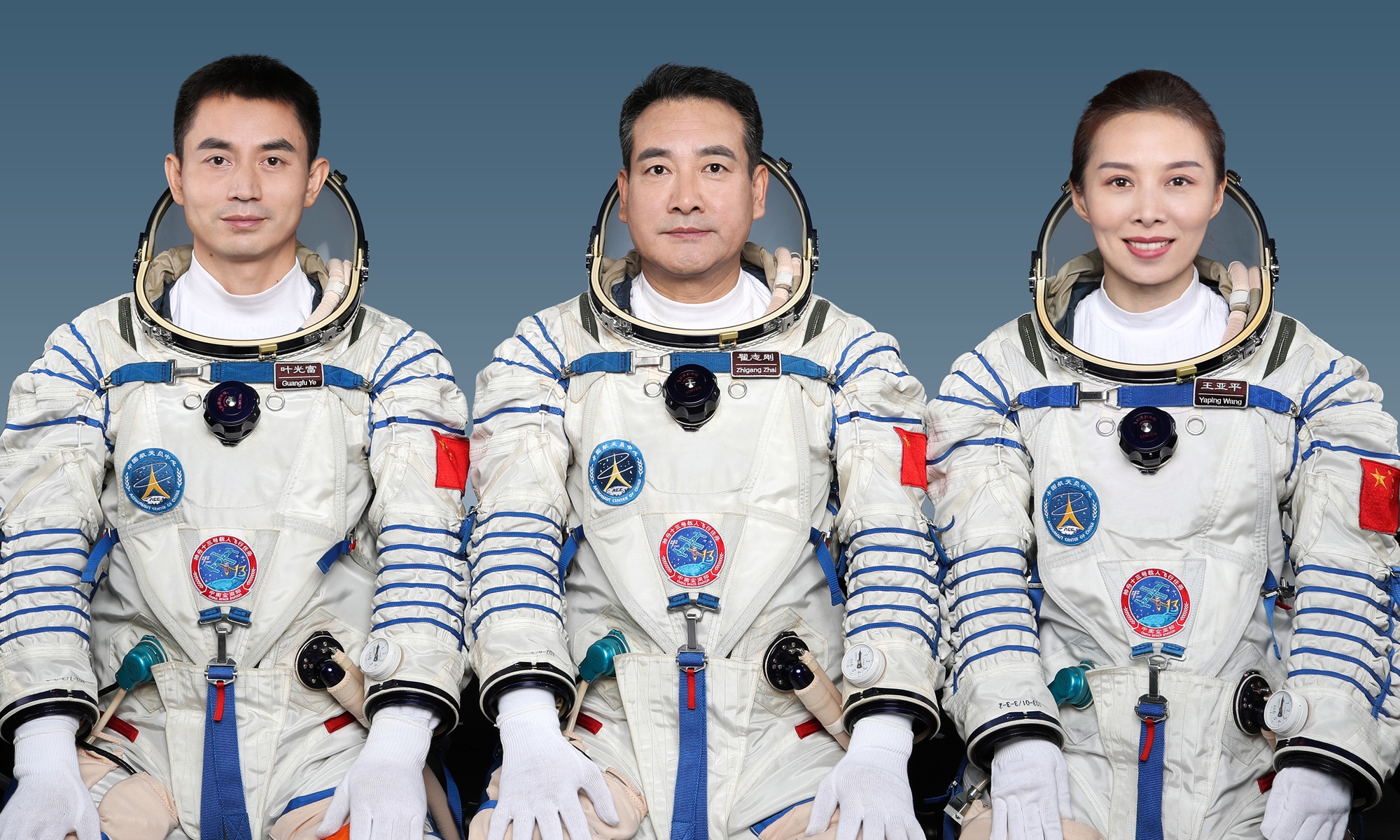
Photo:CMSA
The Long March-2F Y13 carrier rocket, commissioned to send the Shenzhou-13 manned spacecraft into space, was fueled on Thursday afternoon, standing firm in the Jiuquan Satellite Launch Center located in Northwest China's Gansu Province and towering just like the iconic poplar trees of the Gobi Desert around the center.
China Manned Space Agency (CMSA) announced on Thursday afternoon the launch window of the Shenzhou-13 flight mission targets at 0:23 am early Saturday morning, and the mission would conclude this year's space station-building launch mission series and mark the final one of the six launches for the space station technology verification period.
The back-up crew of Shenzhou-12 mission - Zhai Zhigang, Wang Yaping, and Ye Guangfu - were selected to ride the Shenzhou-13 craft to go to space and expected to live and work in China's Tianhe space station core module for a record-long six months, during which at least two spacewalks have been scheduled.
The Shenzhou-13 crew will be led by Zhai Zhigang, known as the first Chinese to have left footprints in space during the Shenzhou-7 manned mission in 2008. The 55-year-old taikonaut, born in 1966 in Northeast China's Heilongjiang Province, was given the honorary title of "Spaceflight Hero," according to the official website of the CMSA.
He is two years younger than Nie Haisheng, who returned safely back to Earth after staying in China's space station core cabin for three months as the first batch of taikonauts during the station's construction stage.
Wang Yaping will fly the mission as the first female astronaut to enter China's space station. She was born in 1980 in Yantai, East China's Shandong Province. The 41-year-old taikonaut was selected to the crew of the Shenzhou-10 space mission in April 2013, delivering China's first televised science lecture in orbit to an audience of more than 60 million schoolchildren and teachers while onboard the Tiangong-1 space lab module. She was also given the honorary title of "Hero Astronaut."
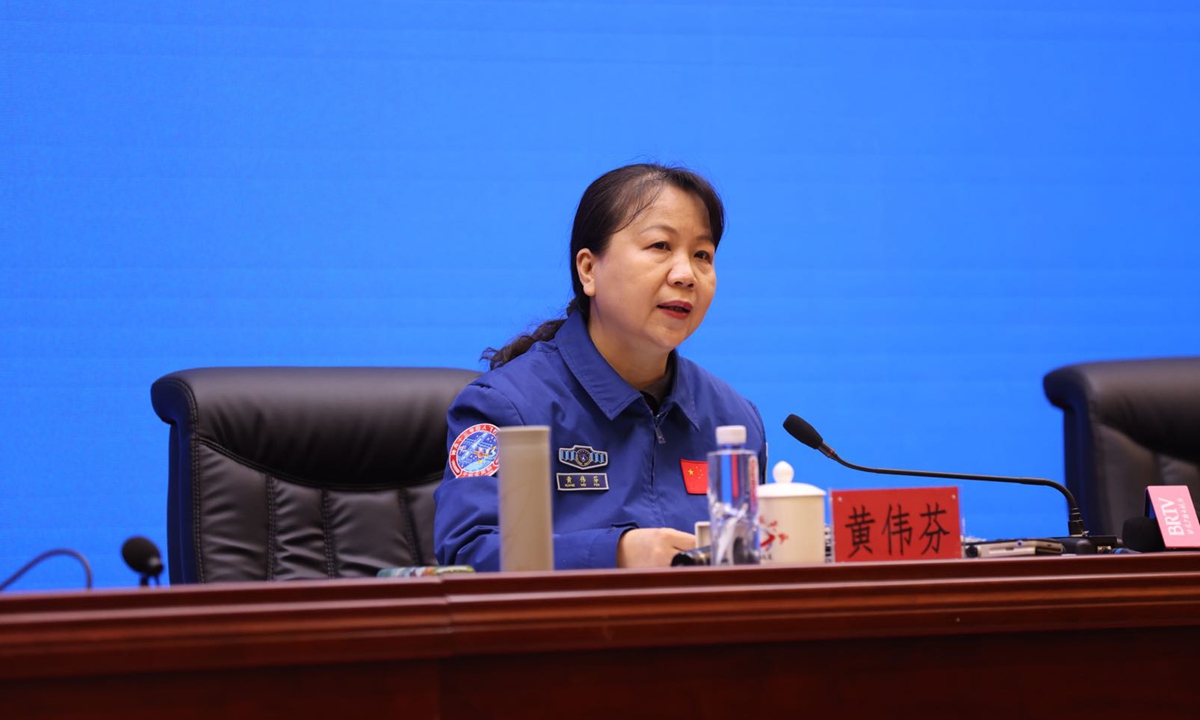
Huang Weifen Photo:Deng Xiaoci/GT
Huang Weifen, the Chinese astronaut training chief, revealed to the Global Times on Thursday that Wang will execute at least one of the scheduled spacewalks.
Wang will not only be the first woman taikonaut to fly into space during the space station building period but also the first woman to ever carry out an extravehicular activity in the country's space history.
The third crew member, Ye Guangfu, also 41, will have his first space adventure in the upcoming Shenzhou-13 mission. Ye delivered an excellent performance during the European Space Agency's cave training, and was chosen to join the second batch of Chinese astronauts. He made his first public appearance in 2016.
The average age of the Shenzhou-13 crew is 45.6 years old, a significant seven years younger than the Shenzhou-12 crew.
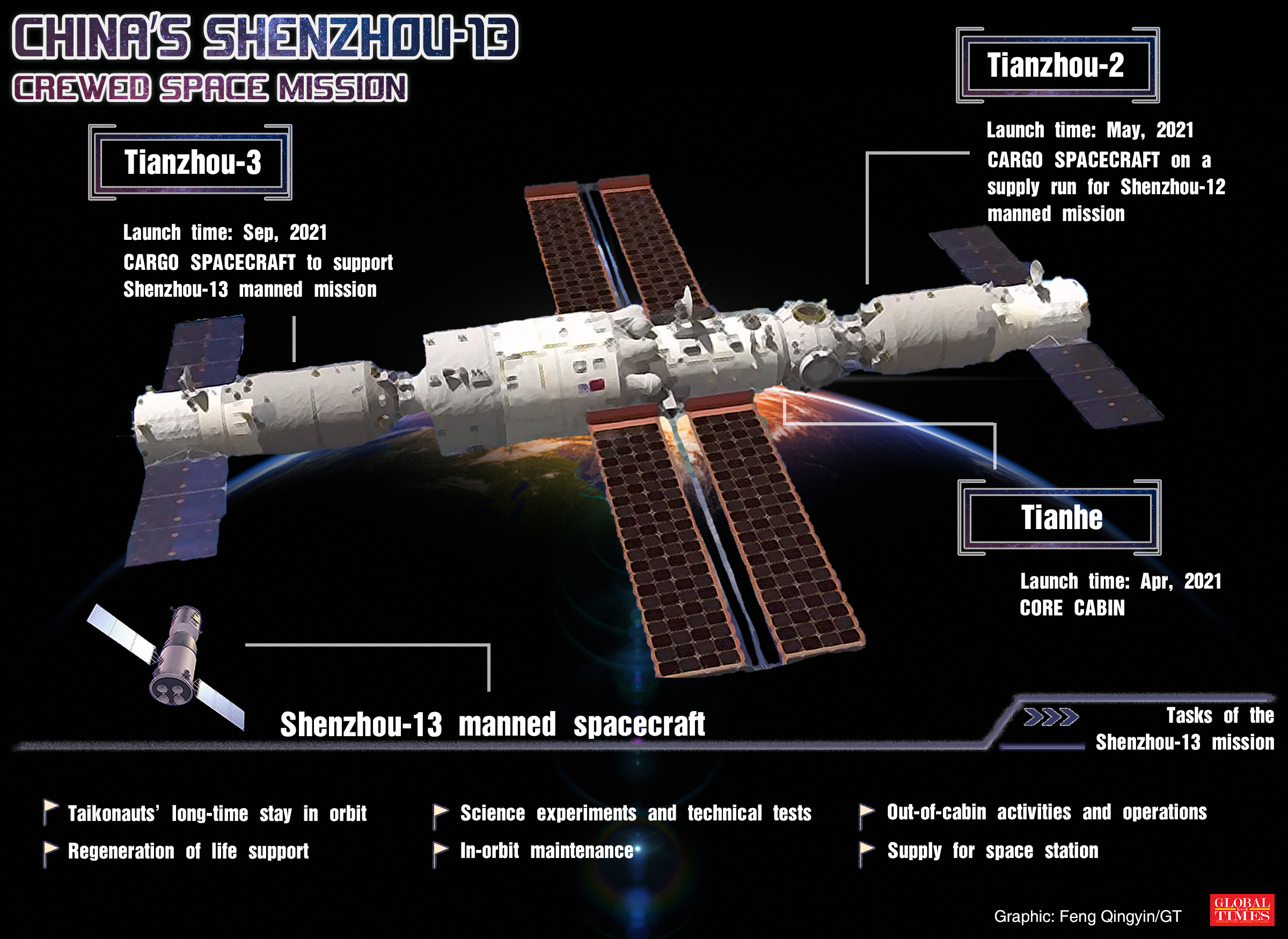
China's Shenzhou-13 crewed space mission Graphic: Feng Qingyin/GT
Huang revealed on Thursday that the mission, which will bring the record of long-term space stay to half a year, poses some tough challenges for the crew, as the enclosed, confined room in the cabin, and the vibration, noise, and gravity-free space environment will be intertwined, adding complexity to their normal work and life.
Physical and mental health will be far more challenging than the previous mission, and the weightless impact on musculoskeletal and cardiovascular systems will be more prominent, Huang noted.
It may lead to sleep disorders, fatigue, gastrointestinal disorders and cardiovascular dysfunction and other problems, and the crew will also be prone to irritability and other adverse psychological reactions, she added.
Taikonauts have taken special strengthening trainings that target these new challenges before their trip. Ground control and support teams are also well prepared to react to the problems that may occur during the trip.
Pang Zhihao, a Beijing-based space expert and retired researcher from the China Academy of Space Technology, told the Global Times on Thursday that in light of the challenges, psychological compatibility is an important factor considered in the selection of the crew.
"Taikonauts can also use psychological relief methods including listening to music, watching TV, or communicating with ground-based psychologists and their families to adjust their mental states," Pang noted.
Including female taikonaut for the trip has also taken into consideration of the fact that they are found to have more stable and enduring mental states that can support long-term stays in orbit, and are more sensible and considerate to any problems in their surroundings. Their strong communication skills and energies will also help the crew maintain a high morale throughout the stay.
Huang said that the Shenhou-12 crew members, who safely returned to Earth after a fruitful three-month stay and working in space, are now in good shape and had shared their space experience with the new Shenzhou-13 crew.
"China welcomes astronauts from other countries to come onboard China's space station and conduct flight cooperation. We believe we could see more such cooperation after the space station enters the full operational and utilization phase," CMSA spokesperson Lin Xiqiang said on Thursday at a press briefing.
Manned space exploration is the common cause of mankind, requiring full cooperation. The China Space Station is an integral part of building a community of shared future, Lin added.
The CMSA urged relevant foreign space agencies and organizations to pay attention to the parameters of Chinese spacecraft that are kept updated on the CMSA website to avoid space collisions and protect the safety of Chinese astronauts.
The Shenzhou-13 will be the concluding mission for China's space station technology verification period. The mission has been assigned several operational tests, including the robotic arm manual remote control and maneuver, two to three extravehicular activities, the installation of robotic arms, and evaluation of taikonauts' physical and mental status during long periods in space, as well as scientific experiments.
After the Shenzhou-13 mission completes the comprehensive evaluation of each operational system, the space station project will enter the construction phase, which is expected to last until 2022.
A total of six launches are scheduled for the upcoming phase. First, the Tianzhou-4 supply mission and Shenzhou-14 manned mission will be launched. During the Shenzhou-14 crew's stay, the Wentian and Mengtian experiment modules will be delivered to the station, completing the three-module combination by the end of 2022.
The Tianzhou-5 cargo craft and Shenzhou-15 manned mission will later arrive at the station to give an overall assessment of its working conditions, after which China's space station will enter the operational phase. Later, the Xuntian optical telescope will be launched to conduct independent flights in the same orbit as the space station.
China's manned space missions have seen many unforgettable moments across the past decades. The Earth-Space video calls, the livestream space lecture, celebrations for the 100th anniversary of the founding of the Communist Party of China … We have reasons to believe that the Spring Festival, which falls in February next year, will see a more different and heavenly blessing from our own space station.
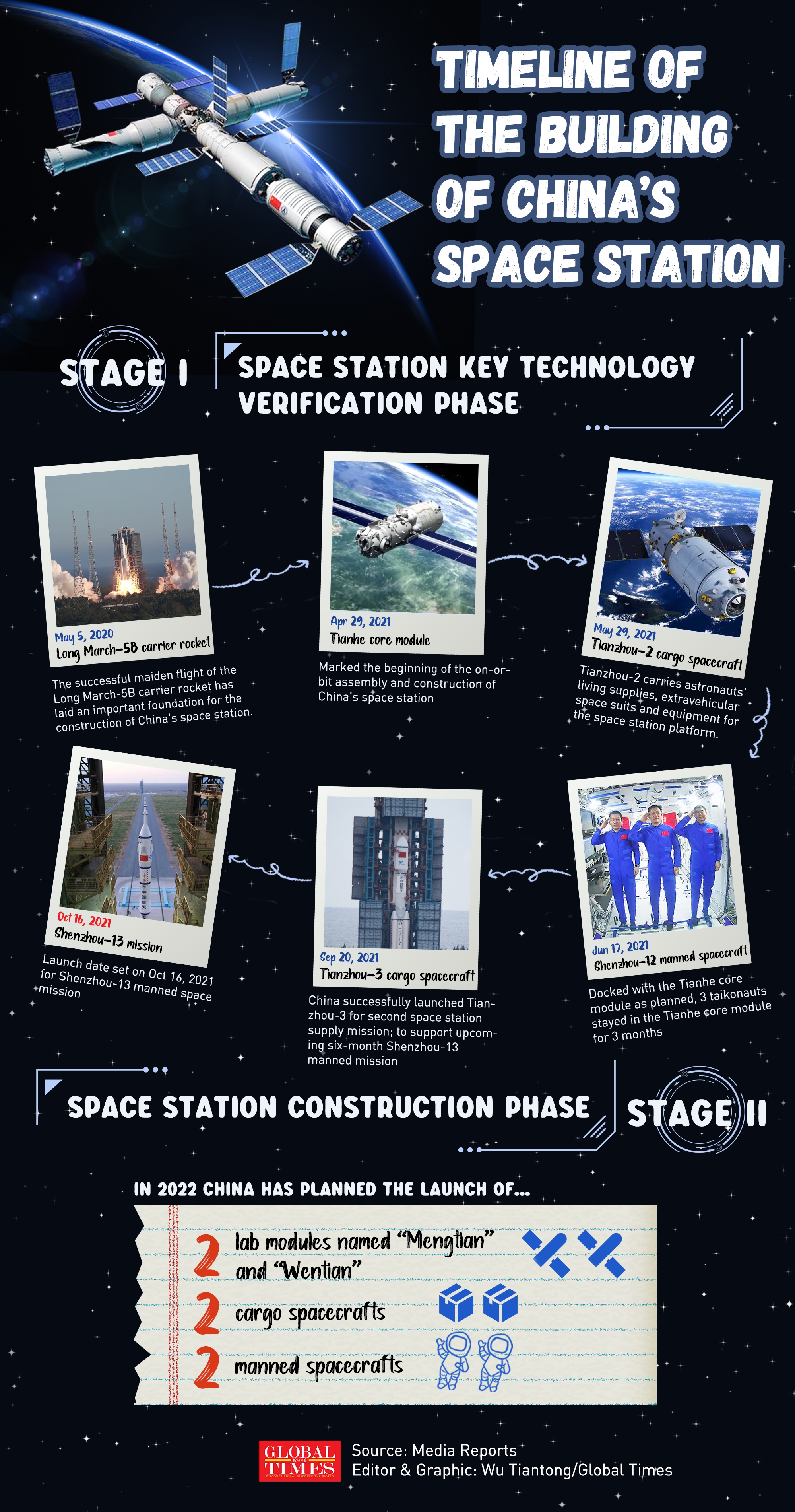
Graphic: Wu Tiantong/GT

